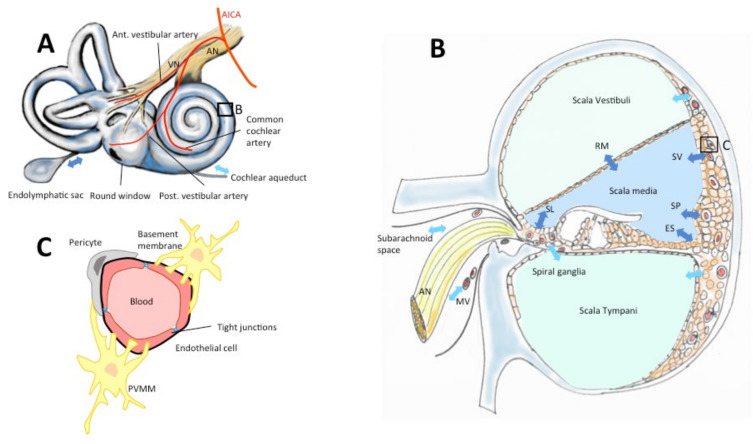Figure 2.
The blood–inner-ear barriers. Drugs reach the inner ear via the vascular compartment, cerebrospinal fluid or the labyrinthine windows (round, oval, A). The inner ear is vascularized by terminal branches of the anterior-inferior cerebellar artery (AICA, A). Perilymph contained in scalae vestibuli and tympani (B) is secreted and absorbed through the scala vestibuli vessels, the subarachnoid space, the modiolar vessels (MV), the capillary region in scala tympani, and the cochlear aqueduct (A,B, light blue arrows). Endolymph in the scala media is secreted and absorbed via stria vascularis (SV), Reissners’s membrane (RM), spiral limbus (SL), spiral prominence (SP), external sulcus (ES), endolymphatic sac (A,B, dark blue arrows). (C) Vessels in the inner ear epithelia are surrounded by endothelial cells with tight junctions, a double-layer basement membrane, pericytes and perivascular-resident macrophage-like melanocytes (PVMM) also called intermediate cells (according to Juhn & Ryback, 1991, Nyberg et al. 2019 [7,8]).

